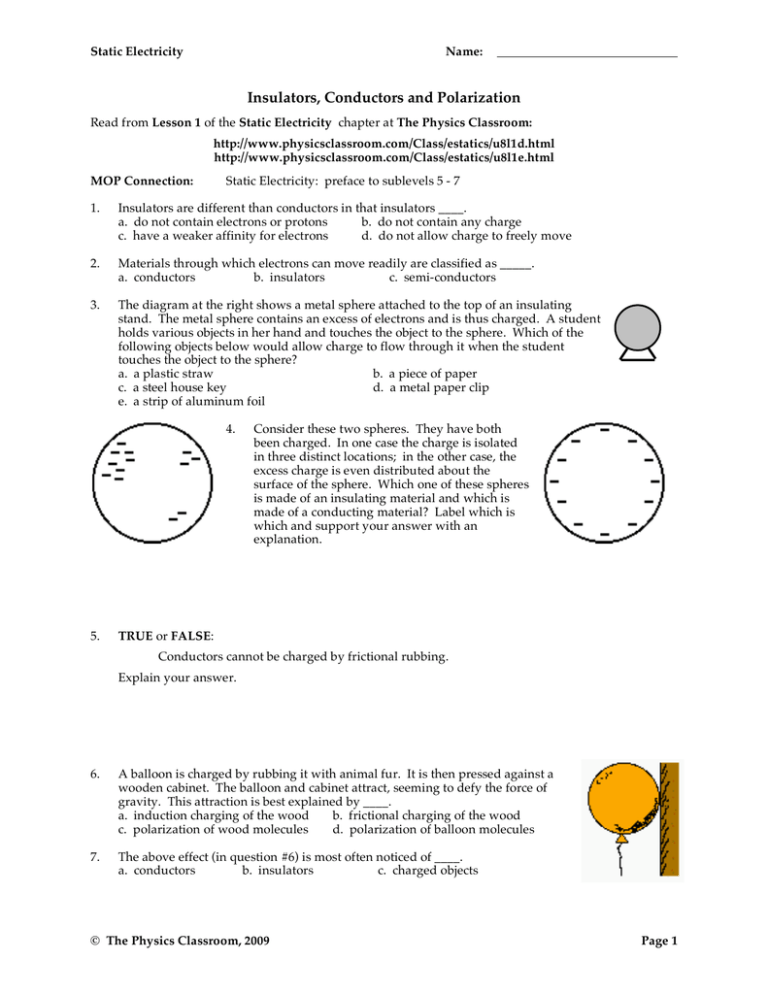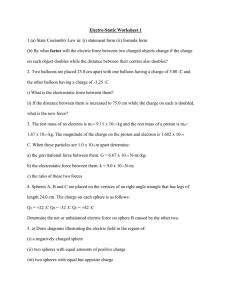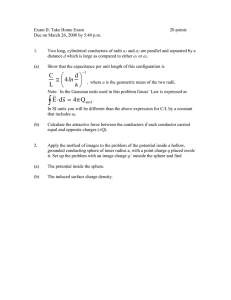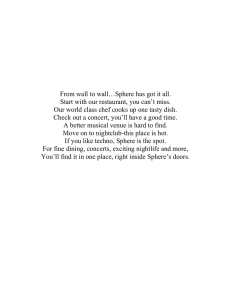Insulators, Conductors and Polarization
advertisement

Static Electricity Name: Insulators, Conductors and Polarization Read from Lesson 1 of the Static Electricity chapter at The Physics Classroom: http://www.physicsclassroom.com/Class/estatics/u8l1d.html http://www.physicsclassroom.com/Class/estatics/u8l1e.html MOP Connection: Static Electricity: preface to sublevels 5 - 7 1. Insulators are different than conductors in that insulators ____. a. do not contain electrons or protons b. do not contain any charge c. have a weaker affinity for electrons d. do not allow charge to freely move 2. Materials through which electrons can move readily are classified as _____. a. conductors b. insulators c. semi-conductors 3. The diagram at the right shows a metal sphere attached to the top of an insulating stand. The metal sphere contains an excess of electrons and is thus charged. A student holds various objects in her hand and touches the object to the sphere. Which of the following objects below would allow charge to flow through it when the student touches the object to the sphere? a. a plastic straw b. a piece of paper c. a steel house key d. a metal paper clip e. a strip of aluminum foil 4. 5. Consider these two spheres. They have both been charged. In one case the charge is isolated in three distinct locations; in the other case, the excess charge is even distributed about the surface of the sphere. Which one of these spheres is made of an insulating material and which is made of a conducting material? Label which is which and support your answer with an explanation. TRUE or FALSE: Conductors cannot be charged by frictional rubbing. Explain your answer. 6. A balloon is charged by rubbing it with animal fur. It is then pressed against a wooden cabinet. The balloon and cabinet attract, seeming to defy the force of gravity. This attraction is best explained by ____. a. induction charging of the wood b. frictional charging of the wood c. polarization of wood molecules d. polarization of balloon molecules 7. The above effect (in question #6) is most often noticed of ____. a. conductors b. insulators c. charged objects © The Physics Classroom, 2009 Page 1 Static Electricity 8. A negatively charged balloon is brought near a neutral conducting sphere as shown in the diagram at the right. The presence of the charged balloon will cause something to happen in the sphere. Which of the following would you expect to occur? Select all that apply. a. Electrons in the sphere will move to the balloon. b. Protons in the sphere will move to the balloon. c. Electrons in the sphere will move to the left side. d. Electrons in the sphere will move to the right side. e. Protons in the sphere will move to the left side. f. Protons in the sphere will move to the right side. 9. The process of inducing the movement of charge within the sphere (referring to question #8) causes positive and negative charge to be separated. This is known as ____. a. grounding b. charging c. polarization d. induction 10. Charged rubber rods are placed near a neutral conducting sphere, causing a redistribution of charge on the spheres. Which of the diagrams below depict the proper distribution of charge on the spheres? List all that apply. 11. In the above situation (question #10), the conducting sphere is ____. List all that apply. a. charged b. polarized c. uncharged (neutral) 12. A physics teacher fills a buret with water and opens the valve, producing a steady stream of water falling vertically to the sink. Then the teacher rubs a rubber balloon with animal fur and holds it near the stream. The stream is observed to deflect from its usual vertical flow towards the balloon. Explain what is causing the deflection of the water stream. 13. A physics teacher charges a balloon negatively by rubbing it with animal fur. The balloon is then placed next to a wooden cabinet and adheres to the cabinet. Explain what is happening at the particle level to cause such a gravity-defying phenomenon. Add to the blownup view of the diagram to assist in your explanation. © The Physics Classroom, 2009 Page 2




